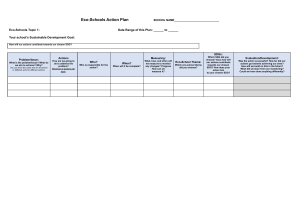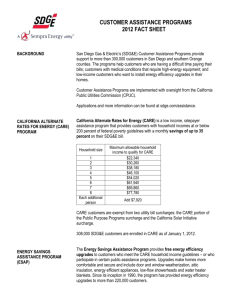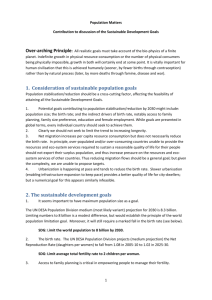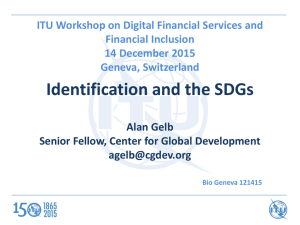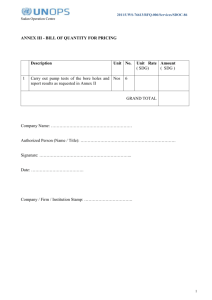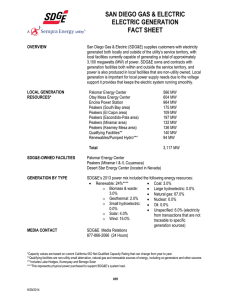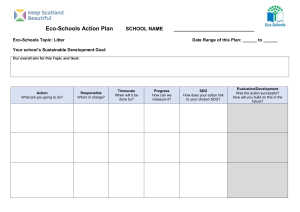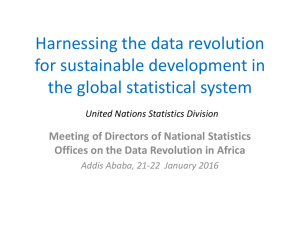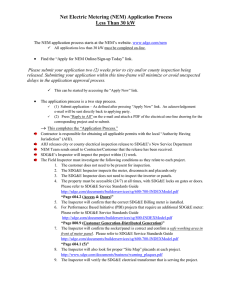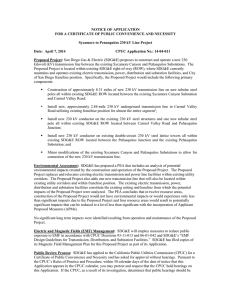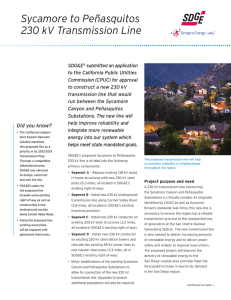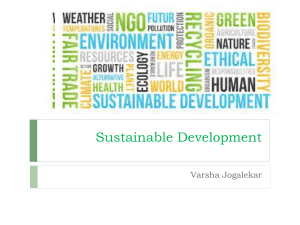Measuring the New Sustainable Development Goals: Opportunities and Challenges for Human Rights
advertisement
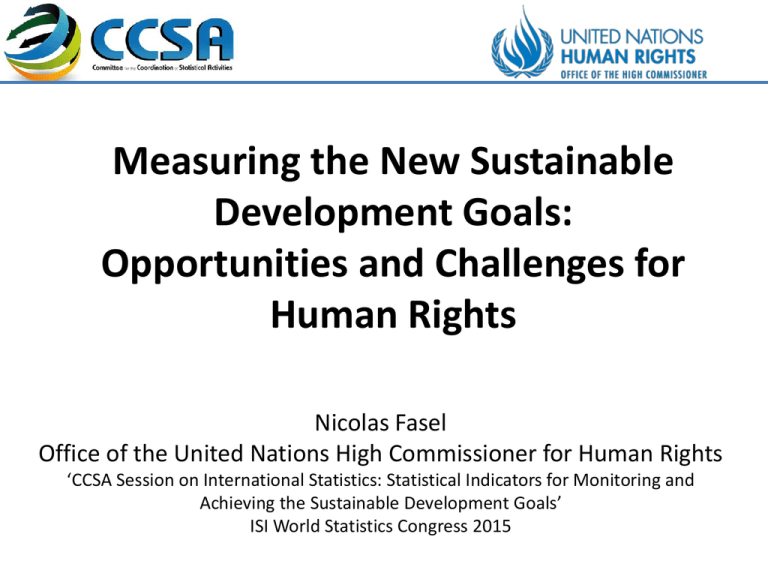
Measuring the New Sustainable Development Goals: Opportunities and Challenges for Human Rights Nicolas Fasel Office of the United Nations High Commissioner for Human Rights ‘CCSA Session on International Statistics: Statistical Indicators for Monitoring and Achieving the Sustainable Development Goals’ ISI World Statistics Congress 2015 “On the eve of the Arab Spring, there were still reports about the remarkable economic and social progress and general improvements in governance and the rule of law that some countries in the region were achieving. At the same time, United Nations human rights mechanisms and voices from civil society were painting a different picture, and reporting on exclusion, the marginalization of communities, discrimination, absence of participation, censorship, political repression or lack of an independent judiciary and denial of basic economic and social rights.” Ms Navy Pillay, South Africa, High Commissioner for Human Rights, 2008-2014 (in Human Rights Indicators: A Guide to Measurement and Implementation ) MDGs indicators framework useful in + Broadening notion of development, beyond GDP + Mobilizing policy action and resources + Strengthening monitoring - Narrow set of socio-economic indicators, masking inequalities and discrimination, vulnerable (invisible) populations and ignoring related aspects (e.g. governance, peace, security) - Lack of accountability “Any legal or regulatory mechanism, or networks or partnerships, set up to mobilize the data revolution for sustainable development should have the protection of human rights as a core part of their activities, specify who is responsible for upholding those rights, and should support the protection, respect and fulfilment of human rights” A World that Counts – Mobilizing the Data Revolution for Sustainable Development, November 2014 MDG statistics matter for economic and social rights “Everyone has the right to a standard of living adequate for the health and well-being of himself and of his family, including food, clothing, housing and medical care and necessary social services, and the right to security in the event of unemployment, sickness, disability, widowhood, old age or other lack of livelihood in circumstances beyond his control.” Universal Declaration of Human Rights, Article 25.1 But MDG statistics did not measure important dimensions of human rights • Inequality and discrimination (e.g. SDG 10, SDG 17.18) • Use of maximum available resources with a view to achieving progressively the full realization of economic and social rights recognized in the Covenant on Economic, Social and Cultural Rights (SDG 17) • availability, accessibility (e.g. affordability), acceptability and quality of good/services (often referred to as ‘AAAQ’ in the human rights field) relevant to economic and social rights (e.g. SDG 2) MDG statistics did not measure important dimensions of human rights • Freedom from fear (in addition to freedom from want), security of person and access to justice (SDG 5, 16) • Participation in public affairs and related freedoms (SDG 5, 16) (Consistency with indivisibility and interdependence of civil, cultural, economic, political and social rights, enshrined in international human rights law) International human rights commitments International human rights commitments Human rights matter for SDG statistics • Obligation to be registered immediately after birth (ICCPR, Art. 24) • Freedom of Expression includes access to information (UDHR, Art. 19, International Covenant on Civil and Political Rights, ICCPR, Art. 19) • Convention on the Rights of Persons with Disabilities (CRPD) Article 31 specifically about Statistics and Data collection: “States Parties undertake to collect statistical data, to enable them to formulate and implement policies to give effect to the Convention” and… Human rights matter for SDG Statistics • “The information collected shall be disaggregated,…, used to help assess the implementation of States Parties' obligations (…) and to identify and address the barriers faced by persons with disabilities in exercising their rights” • “The process of collecting and maintaining this information shall comply with internationally accepted norms to protect human rights and fundamental freedoms and ethical principles in the collection and use of statistics” (CRPD, Article 31) • “Civil society, in particular persons with disabilities and their representative organizations, shall be involved and participate fully in the [national implementation and monitoring] process” (Article, 33) SDG agenda to be “consistent with international law” (Rio +20) suggests a Human Rights-Based Approach (HRBA) to statistics & data collection • Aligning indicators with human rights standards • Data disaggregation “leaving no-one behind” • Participation of concerned populations in data collection efforts • Safeguards in data collection and dissemination • Measuring both conduct and result Considerations on way forward (HRBA) • Consistent with SDG 17.18 and “leaving no-one behind”: (1) disaggregation of SDG indicators by grounds of discrimination prohibited by international human rights law (2) new data sources including “invisible populations” (e.g. homeless people, minorities, migrants) • Capacity strengthening and partnership with other data producers and users, such as relevant civil society organizations and national human rights institutions • Human rights training for statisticians and statistics training for human rights practitioners • Building on and sharing of good practices Key resources for HRBA to SDG statistics “We should never forget that behind every piece of statistical data are human beings who were born free and equal in dignity and rights” United Nations High Commissioner for Human Rights (in Human Rights Indicators: a Guide to Measurement and Implementation)
